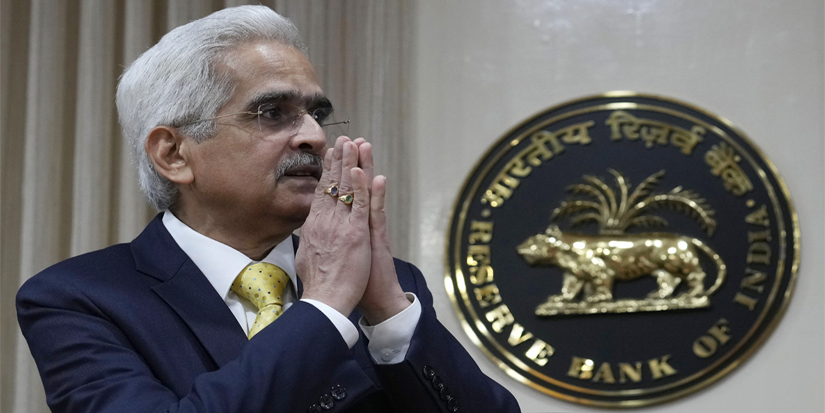India: On Track to Become the World’s #3 Economy
-
 Ed D'Agostino
Ed D'Agostino
- |
- March 5, 2024
- |
- Comments
India’s growth story is unprecedented.
It has the fastest-growing major economy in the world—GDP grew 8.4% in the final quarter of 2023, according to data released last week. Many analysts expect it to pass Germany and Japan to become the world’s third-largest economy. Deloitte South Asia CEO Romal Shetty thinks that will happen by 2027.

Much of this growth stems from favorable demographics. Last year, India surpassed China to become to the largest nation by population. It’s also the only top-five economy that’s young—40% of people there are under age 25. And India will stay relatively young because it’s the only top-five economy where births exceed the replacement rate.
EM to DM in 25 Years
India’s Prime Minister, Narendra Modi, wants to turn India into a developed country “within the next 25 years.” That is ambitious, but not implausible.
Modi, who’s up for reelection this year, has been opening the economy to foreign investment since he came to power in 2014. Foreign direct investment reached $71 billion for the 2022–23 financial year, and India’s information technology minister says they’re targeting $100 billion in annual FDI “in the next few years.”
Modi is turning India into a manufacturing hub through programs like Make in India, capturing business from Western companies seeking a cheaper and friendlier alternative to China. Manufacturing accounts for 17% of India’s GDP, but projections show that figure reaching 25% as early as next year.
Electronics manufacturing is growing particularly fast, almost doubling between 2017 and 2022. It’s expected to reach a compound annual growth rate of 24% from now to 2027.
Apple, for example, plans to make roughly a quarter of all iPhones in India within 2–3 years. This will help the company minimize its dependence on China. Foxconn, a Taiwanese electronics manufacturer and major Apple supplier, is spending $1.5 billion to set up shop in India as well.
|
India’s Digital Infrastructure—a Leader in Fintech
For the past decade, Modi has been building out India’s digital infrastructure, called India Stack, to facilitate growth and modernization. India Stack (developed under Infosys co-founder Nandan Nilekani) is underpinned by India’s biometrics-based national ID program, Aadhaar. The system sounds a bit invasive to my American ears, but its benefits are undeniable. 99% of Indians have signed up for Aadhaar because it gives them access to digital banking and other aspects of modern life that you and I take for granted.
The numbers are telling. Today, at least 78% of Indians over the age of 15 have a bank account. That’s a massive leap from 2011, when only 44% of Indians over 15 had one.
In today’s India (and other emerging markets), your smartphone is a gateway to e-commerce, insurance, banking… everything. What sets India apart is its digital payment system, combined with broad access to the internet. A smartphone can be had for $12 from Reliance Jio. Mobile data is cheap and readily accessible.
Bridging the East-West Divide
India comes with its fair share of risks. The unemployment rate for new graduates under age 25 tops 40%. And the political environment is tense—a problem India’s high unemployment and stark class divides exacerbate.
That said, India will both drive and benefit from the core active investment themes I’m focused on—the multipolar world, reshoring/friendshoring, and AI. I’ve written before that in the coming years, most nations will fall into one of two spheres: the US sphere or the China sphere. Few will be able to do business with both, but India will be one of them, and Indian companies will benefit.
Historically, it’s been difficult for Western investors to access India. In recent years, a host of India ETFs have been created—some better than others. Many are stuffed with companies that have little revenue coming from India, or with state-owned entities.
One way to gain exposure to India’s expanding middle class and fast-growing digital economy is the India Internet & Ecommerce ETF (INQQ). Last week, I spoke with Kevin Carter, the ETF’s founder. He made a compelling case for India’s e-commerce growth. The demographic trends are striking.
Still, Indian stocks are pricey, having run up considerably over the past year. They’ll have to grow into their price-to-earnings ratios. Be sure to do your own due diligence.
Have you made an investment in India? What do you think of India’s growth story? Are there other emerging markets you like better, and if so, why? You can drop a comment or question in our Global Macro Update Community space by clicking here.
Thanks for reading.
Best regards,

Ed D’Agostino
Publisher & COO
|

 Ed D'Agostino
Ed D'Agostino


